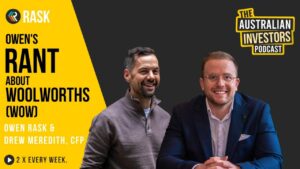When interest rates are falling, there is one category of assets that tends to perform very well – real physical assets. Here’s how the BetaShares Legg Mason Real Income Fund (ASX: RINC) takes advantage of that.
What Are ETFs?
Exchange-traded funds, or ETFs, are investment funds that are listed on a stock exchange and provide exposure to a range of shares or assets with one purchase.
This Rask Finance video explains ETFs:
Real Income Fund
The BetaShares Legg Mason Real Income Fund is a collaborative effort between BetaShares and Legg Mason and its main goal is to provide a pre-tax income yield above the S&P/ASX 200 (INDEXASX: XJO).
This managed fund invests in a portfolio of ASX-listed companies that hold real physical assets, like real estate investment trusts (REITs), utilities and infrastructure.
This focus on real assets aims to produce a regular, growing stream of income that will rise with inflation. When interest rates fall, as they have been recently, the price of real assets typically increases because the cost of capital is reduced, as is the risk-free rate.
At the end of August, the RINC ETF had 35 holdings including a cash allocation. More than half of the ETF (57.3%) is invested in REITs, while the rest is spread across utilities and infrastructure.
The RINC ETF’s top holdings include Transurban Group (ASX: TCL), Scentre Group (ASX: SCG), and AGL Energy Limited (ASX: AGL).
The focus on real assets appears to be paying off. Over the last 12 months, the ETF has returned 23.02% compared to the 12.41% return on the ASX 200. Since inception in February 2018, the fund has returned 19.07% per year versus 13.66% for the index.
While it is not the most reliable indicator, the comparable unlisted fund has returned 15.24% per year over the last five years.
The current 12-month trailing distribution yield is 4.3% but, based on broker estimates and research from Legg Mason, the yield is expected to reach 5.3% per year. Of course, this is only an estimate.
Fees And Risks
The RINC ETF charges a management fee of 0.85% per year, which I would say is reasonable for an actively-managed ETF.
The portfolio is quite concentrated and only has a meaningful level of exposure to three broad industries, so the investor must put a lot of faith in the fund manager to be able to identify risks in those industries and protect the ETF.
While decreasing interest rates can have a positive effect on real asset prices, rising interest rates can have a negative impact and would likely see the fund underperform the ASX 200 index.
It should also be noted that the RINC ETF only has a short track-record, so it’s difficult to gauge what long-term performance may look like.
My Take
The RINC ETF has more than delivered on its objective over the last 12 months, beating the index return convincingly and providing a high and increasing dividend yield. However, this isn’t a free lunch. The higher returns are at least to some extent the result of taking on more risk than the index, so keep this in mind when making an investment decision.
If you’re looking for an option with less risk but a high dividend yield, our number one ETF pick in the free report below is worth considering.
[ls_content_block id=”14948″ para=”paragraphs”]
Disclosure: At the time of writing, Max does not have a financial interest in any of the companies mentioned.




